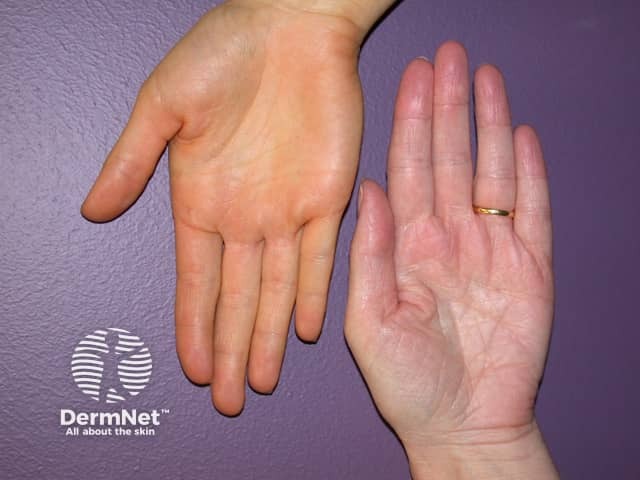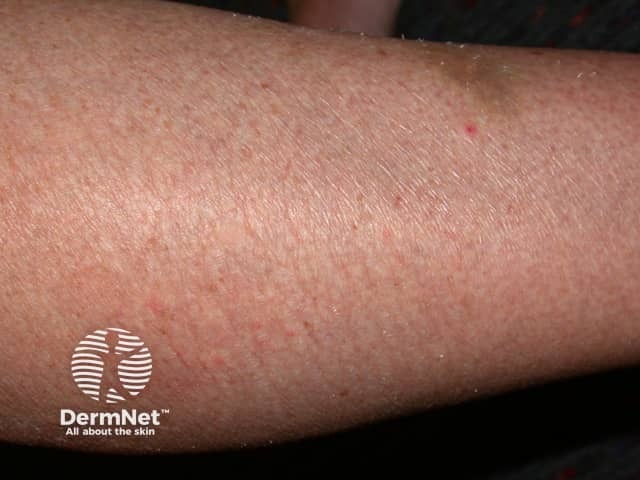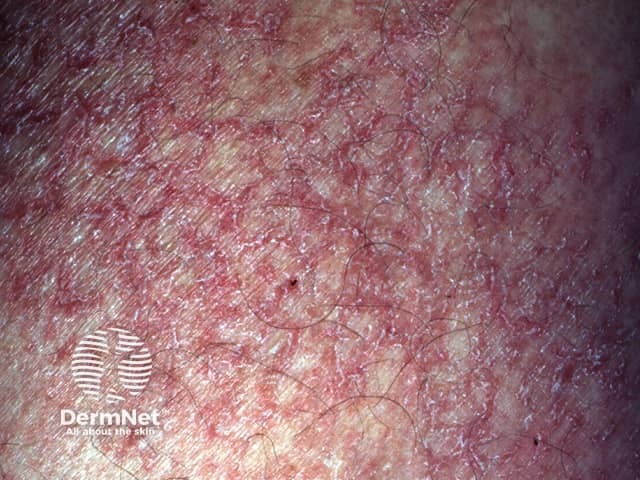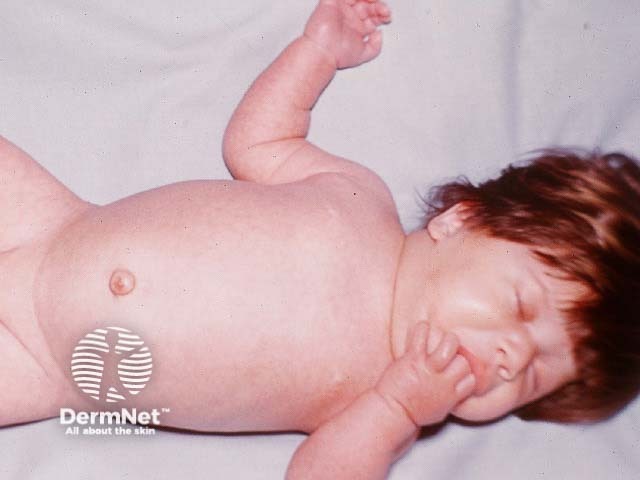Main menu
Common skin conditions

NEWS
Join DermNet PRO
Read more
Quick links
Author: Dr Shendy Engelina, Core Medical Trainee, Northampton General Hospital, UK. Chief Editor: Dr Amanda Oakley, Dermatologist, Hamilton, New Zealand, July 2016.
Introduction Introduction Demographics Causes Clinical features Complications Diagnosis Treatment Outcome
Abnormal levels of circulating thyroid hormone (thyroxine) and underlying diseases may lead to alterations in the appearance of skin, hair and nails. The thyroid gland can be overactive, resulting in hyperthyroidism, or underactive, resulting in hypothyroidism, discussed here.
In contrast to hyperthyroidism, in hypothyroidism, the thyroid gland is underactive, causing a reduction in thyroxine production.
Hypothyroidism can occur at any age and sex but is most commonly seen in females during menopausal years (age 40–50 years).
There are several causes for hypothyroidism.
Autoimmune thyroiditis is also known as atrophic thyroiditis or Hashimoto disease when goitre is present.
Subacute thyroiditis is also known as De Quervain thyroiditis.
The element iodine is crucial for thyroxine synthesis.
Hypothyroidism may arise from medications.
Congenital hypothyroidism, or cretinism, may result from the absence or incomplete development of the thyroid gland, defects in thyroid hormone metabolism or hypothalamic-pituitary axis dysfunction. It is rare.
Rare causes of hypothyroidism
Rare causes of hypothyroidism include:
Hypothyroidism results in a reduction in the body’s metabolic rate. It is characterised by:
Other common systemic symptoms due to hypothyroidism include weight gain, cold intolerance, low mood and menstrual disturbances (irregular or heavy period).

Carotenoderma

Dry skin

Eczema craquelé
Clinical features of congenital hypothyroidism include:

Congenital hypothyroidism
Serious complications may occur if hypothyroidism left untreated:
Hypothyroidism is diagnosed with thyroid function tests (TFTs).
*Sick euthyroid syndrome commonly occurs in patients who suffer from severe non-thyroidal illness such as sepsis, burns and trauma. It is usually transient, and treatment may not be required, as thyroid function typically reverts to normal following disease recovery.
Interpretation of thyroid function tests |
|||
|---|---|---|---|
TSH |
Free T4 (thyroxine) |
Free T3 (triiodothyronine) |
|
(Primary) hyperthyroidism |
Low |
High |
High |
Secondary hyperthyroidism |
High |
High |
High |
Subclinical hyperthyroidism |
Low |
Normal |
Normal |
Primary hypothyroidism |
High |
Low |
Low or normal |
Secondary hypothyroidism |
Low or normal |
Low |
Low or normal |
Subclinical hypothyroidism |
Borderline high |
Normal |
Normal |
Sick euthyroid syndrome |
Low |
Low |
Low |
Serum autoantibodies are present in 90–95% of autoimmune thyroiditis. They should include:
Full blood count and inflammatory markers, such as C-reactive protein, are routinely included to screen for anaemia (commonly associated with hyperthyroidism) and systemic infection causing thyroiditis. Creatine kinase is tested to check for myopathy, and lipids are evaluated as hypercholesterolaemia and hypertriglyceridaemia are common in hypothyroidism.
Imaging should include:
Levothyroxine is the first line of treatment to replace the lack of thyroxine in the body.
Although side effects are uncommon, symptoms of hyperthyroidism can occur when too much thyroxine is taken — this includes diarrhoea, irritability, sweating and palpitation.
The majority of patients respond well to levothyroxine, and they usually take this medication for life.